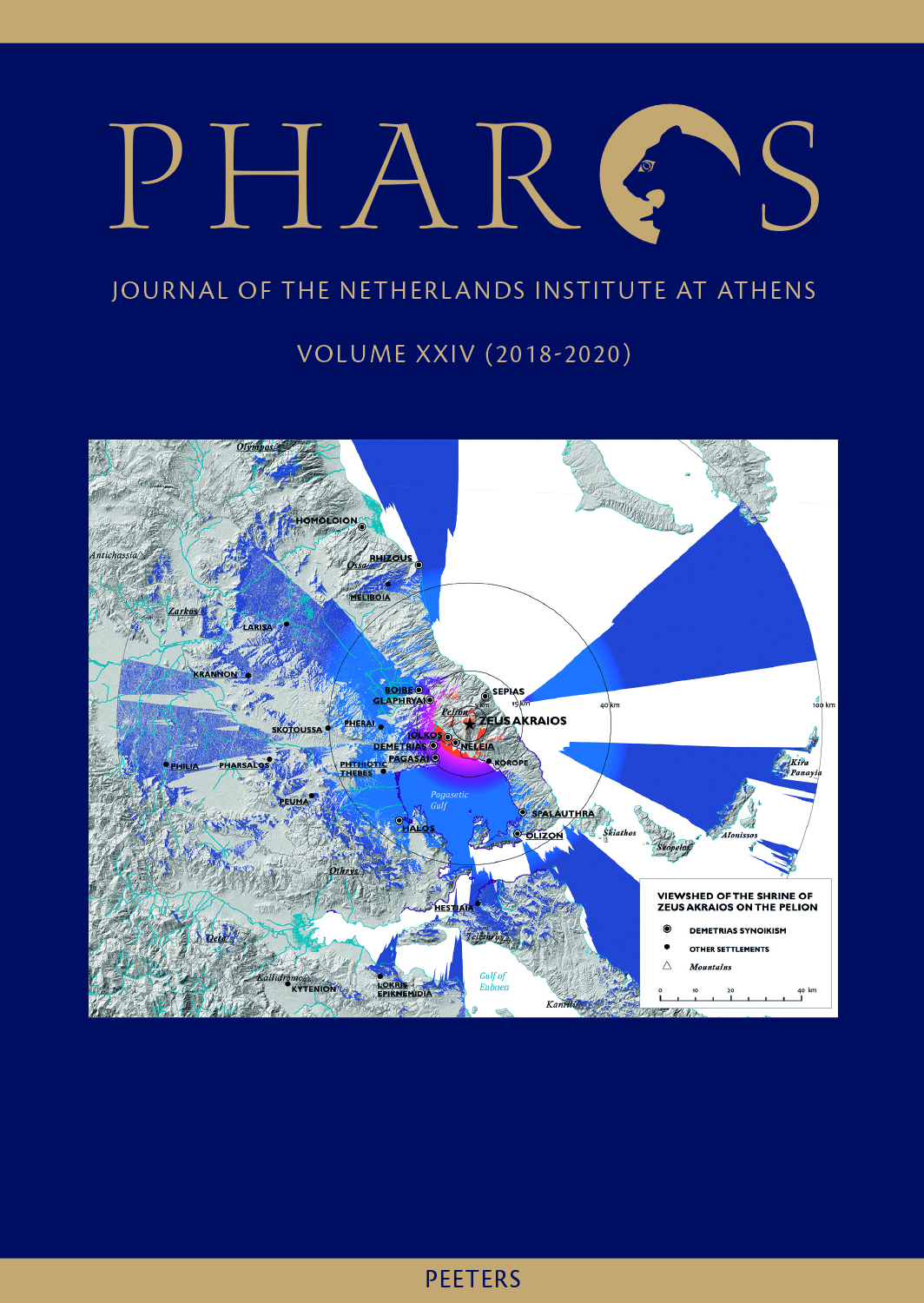 previous article in this issue previous article in this issue | next article in this issue  |

Preview first page |
Document Details : Title: The Plakari Archaeological Project Subtitle: Preliminary Report on the Fourth Field Season (2013) Author(s): CRIELAARD, Jan Paul , CHARALAMBIDOU, Xenia , CHIDIROGLOU, Maria , KOSMA, Maria , SONGU, Filiz Journal: Pharos Volume: 21 Issue: 2 Date: 2015 Pages: 117-133 DOI: 10.2143/PHA.21.2.3206297 Abstract : The 2013 fieldwork campaign at Karystos-Plakari in southern Euboia provided valuable new insights into the structural developments of the cult site from the Early Iron Age down to the end of the Classical period. The remaining part of the open-air sacrificial refuse area was excavated, which again yielded large amounts of animal bones, pottery and small finds (mainly EIA, but also later material). On Terrace 2, a long wall was uncovered, running north-south; probably constructed before the mid-7th century BC, it is the earliest architectural feature to date. Perhaps during the later 7th century BC, the entire area was enclosed by a peribolos wall. At the same time, this seems to have functioned as a terrace wall, supporting a platform and a semi-circular stone feature. Burnt material found inside and around it indicate that it served as an altar. In 2012, we uncovered a number of metal finds in this area; this year, we found more iron knives and a bronze phiale mesomphalos, indicating that the semicircular stone feature was the focus of various cultic activities. To the north, a series of surfaces was found, again with clear traces of burning. Broken pottery and animal bones indicate that this area was used for sacrifices and ritual eating and drinking from the late 6th to early 4th centuries BC. During the late 5th or early 4th century BC, the living rock inside the peribolos wall was leveled and Building A was constructed in the NW corner. No material later than the end of the Classical period was retrieved from Building A and the area around it. The only evidence for temporary re-use of the Plakari hill top comes from a Late Ottoman hut or lookout excavated this year on the hill’s summit. |
 |


